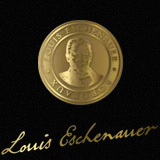Wine tasting is always a pleasure and an enjoyable experience. Here are a few words of advice to take it one step further, to make it unique.
It will help you discover the key stages in the tasting experience.
Transport
Try to avoid bumping the bottle and extreme changes in temperature, hot or cold. Transporting the wine “shakes” it, so it would be preferable to leave it to rest a few days after a long journey before tasting it.
Storing
Keep the wine in a cool, dark place. Avoid exposing the bottles to light. To protect them, they can be wrapped up or kept in their original box or case. Ideal storage temperatures are between 14 and 16°C.
Serving the wine
Delicately remove the foil using a sommelier knife and then remove the cork. Make sure that there is no cork residue in the neck of the bottle. Do not let the wine touch the foil. If the wine is too warm, it will only release an odour of alcohol. Feel free to serve it at a cooler temperature.
For a wine to reveal its full personality and aromatic expression, allow it to breathe. Putting it in a carafe is an ideal solution. Use a carafe with a wide neck, so that a maximum amount of air comes into contact with the wine. A wine can be sufficiently aerated if it is put in a carafe a few minutes before serving.
The glass
To fully appreciate a wine, you will need the right glass. It should be taller than it is broad, and slightly closed at the top (mouth of the glass) to trap the aromas, for even greater drinking pleasure. There are many different wine glasses. Ideally, you could choose the style of glass to match the character of wine that you will be tasting. For a rich and complex wine, choose a wide-mouthed glass. As the wine oxygenates, it will reveal its powerful aromas perfectly. For white wines, it is better to use a smaller glass with a narrower bowl. In general terms, never fill the glass over halfway as it will change the diffusion of the aromas. There are two reasons why wine glasses have a long stem. It protects the wine from the heat of the fingers and it is ideal for delicately spinning the wine, to encourage release of its aromas.
![]()
Ideal tasting temperatures
Ideal tasting temperatures
White Pays d’Oc: 10 to 12°C.
Red Pays d’Oc: 16 to 18°C.
Sweet white Bordeaux: 8°C.
Dry white and rosé Bordeaux: 8 to 10°C
Red Bordeaux: 16 to 18°C
Crémants de Bordeaux: 8 to 10°C
Tasting
Tasting a wine is a unique experience that uses our visual, olfactory and gustatory senses, but also is very specific and sensitive to each person.
![]()
Colour
It is important to appreciate the colour of a wine before tasting it, to understand its character. To do this, hold the wine in front of a white background like a piece of paper to observe its colour with no light interference from elsewhere. This is also the stage where we can examine its limpidity and shine. When you angle the glass, the tears draw down the sides. The greater the alcohol and sugar content, the longer the tears.
![]()
Bouquet
Inhale delicately to appreciate what we call the first bouquet, and evaluate the general character of the bouquet as a whole. Then gently spin the wine in the glass, holding it at its base, to reveal all the aromas. Get as close as you can to the wine to inhale the bouquet and its wide range of fragrances. Bordeaux wines can have a broad palette of smells from red berries to vanilla, chocolate to wood and spices. These fragrances and smells are unique to each person. Each person can discover different fragrances depending on their sensitivity and their olfactory memories.
![]()
Taste
Take a small mouthful of wine and try to keep it in your mouth for a few seconds to appreciate the flavours it releases. Feel the fruit and tannins on the tongue to understand the structure on the palate. At this stage we are interested in its balance, and how the different aromas combine.
Serving suggestion
“It is important that the dish does not overpower the wine and vice versa. It is preferable to match a heavy meal with a characterful wine.
Word of advice: to create a perfectly balanced meal, serve the same wine that you use to make the meal. ”
You now have everything you need to fully appreciate wine. Let yourself be tempted by Eschenauer wines!
